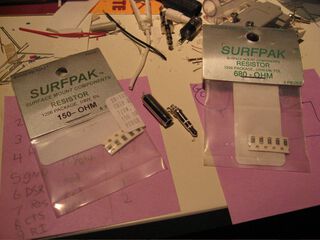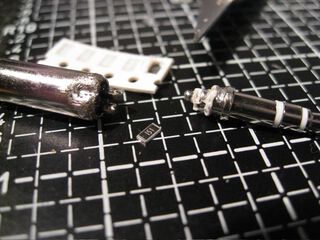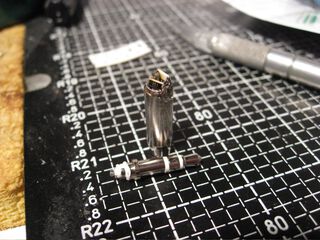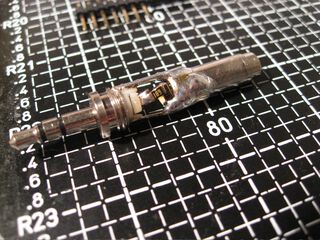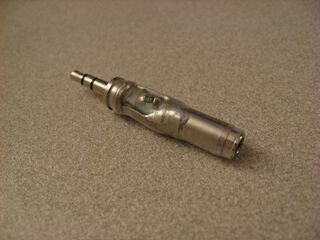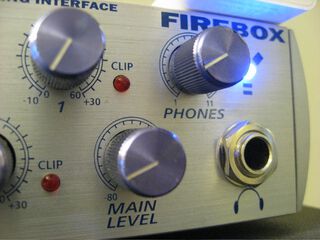20db Inline Attenuator Pad for Earphones
A few years ago I was fortunate enough to acquire a pair of Shure E5 in-ear earphones, which I've greatly enjoyed. They're fantastic headphones, and also some of the most sensitive around. Not only do they just need to drive a tiny bit of air between the diaphragm and my eardrum, but they're rated at 122 dB/mW and have an impedance of 110Ω. They've always been a joy to use with my iPod, but plugging in to my laptop has always meant I had to endure an unreasonably high noise floor, and be careful not to turn the volume up beyond a couple of notches, because any higher would certainly induce pain. Because they're effective at blocking out external noise, I usually listen at a low volume, but despite this I found I was experiencing ear fatigue after even short periods of listening. That hiss was terribly wearing.
Just recently I purchased a Presonus FireBox from Charlie—most likely just as part of my audiophile addiction—and indeed it is a great device. The 24bit/96khz DAC is quiet and outside of the noisy electronic environment of my MacBook Pro. The headphone amp in this thing goes to 11, both figuratively and literally. This is a point of safety concern. Of course there is the standard warning about not listening to audio at a loud volume for extended periods of time, but in this case I feared plugging my E5s into the FireBox. Setting the volume to anything above zero was too loud. I was concerned I might accidentally turn the volume to a dangerous level.
So the solution to all of this was not to buy more expensive equipment, but just stick some resistors inline with my headphones. I decided to build an inline attenuator pad to drop the signal down by about 20db. This solves the above mentioned problems elegantly. It requires I turn up the volume a bit to listen which keeps the signal to noise ratio low on the laptop's internal headphone output, and gives me a safety margin on the FireBox.
Construction wasn't too involved, but it was a bit tricky to keep everything within the small dimensions I wanted to maintain. I used SMT resistors to minimize space, and had to scavenge the female 3.5mm jack from an extension cable to find one that was narrow profile.
I got most of the design info I needed about making audio pads from this article. It turns out, they're just simple voltage dividers. I'm confident I didn't actually get the 20db I wanted, but it does indeed drop the signal an appropriate amount. I used 150Ω shunt resistors with 680Ω series resistors.
This whole problem of over sensitive headphones is usually solved by sticking a passive volume control inline with the headphones. In fact, new Shure headphones ship with one of those in the box. I chose not to go that route here, not only because I didn't want another volume control to fiddle with, but because this way I couldn't accidentally leave it turned up when plugged in to the FireBox.
Overall I'm happy with the result, despite the fact I had to use clear heatshrink to house the pad instead of red. Perhaps i'll upgrade housings later :).
Let me know if you know of a commercial source for headphone fixed attenuators or you built your own.
